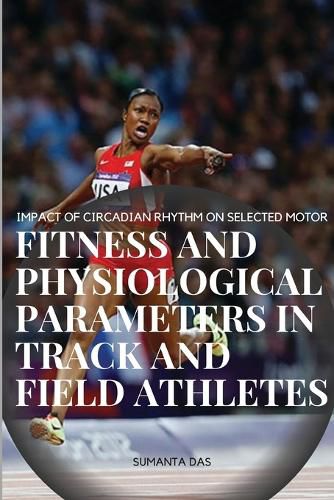Readings Newsletter
Become a Readings Member to make your shopping experience even easier.
Sign in or sign up for free!
You’re not far away from qualifying for FREE standard shipping within Australia
You’ve qualified for FREE standard shipping within Australia
The cart is loading…






This title is printed to order. This book may have been self-published. If so, we cannot guarantee the quality of the content. In the main most books will have gone through the editing process however some may not. We therefore suggest that you be aware of this before ordering this book. If in doubt check either the author or publisher’s details as we are unable to accept any returns unless they are faulty. Please contact us if you have any questions.
Circadian rhythm may be defined as a natural, biological process to regulate the sleepwake cycle and normally repeats in 24 hours (Reilly, ). According to the etymology of the term "circadian", it comes from the Latin word 'circa', meaning "around" and 'diem', meaning "day"(Hower et al. ). The physical, mental and behavioral structures are affected by the circadian rhythm which is primarily regulated by the diurnal effect (day-night) of the earth (Winter et al. ). However circadian rhythms are endogenous ("built-in", self-sustained) by nature and adjusted (entrained) to the environment by external signals called Zeitgebers (sunlight). Although many other internal and external factors such as chronic physical exercise, fatigue, sleep quality, anxiety, attitude, lifestyle, etc. broadly alter the dimension of circadian rhythm (Touitou and Haus, 1992). The circadian rhythm or sleep-wake cycle is largely controlled by the Suprachiasmatic nucleus (SCN) situated at the hypothalamus gland of the brain. In a simplified way, the hypothalamus collects signal via the optic nerve from the eyes and respond to signals accordingly through SCN. The light stimuli trigger SCN (releases cortisol and melatonin) and darkness innervates SCN as well as other parts of the central nervous system (CNS) to regulate neural and hormonal activity, heart rate, blood pressure, core body temperatures, and other internal mechanisms of the human body.
$9.00 standard shipping within Australia
FREE standard shipping within Australia for orders over $100.00
Express & International shipping calculated at checkout
This title is printed to order. This book may have been self-published. If so, we cannot guarantee the quality of the content. In the main most books will have gone through the editing process however some may not. We therefore suggest that you be aware of this before ordering this book. If in doubt check either the author or publisher’s details as we are unable to accept any returns unless they are faulty. Please contact us if you have any questions.
Circadian rhythm may be defined as a natural, biological process to regulate the sleepwake cycle and normally repeats in 24 hours (Reilly, ). According to the etymology of the term "circadian", it comes from the Latin word 'circa', meaning "around" and 'diem', meaning "day"(Hower et al. ). The physical, mental and behavioral structures are affected by the circadian rhythm which is primarily regulated by the diurnal effect (day-night) of the earth (Winter et al. ). However circadian rhythms are endogenous ("built-in", self-sustained) by nature and adjusted (entrained) to the environment by external signals called Zeitgebers (sunlight). Although many other internal and external factors such as chronic physical exercise, fatigue, sleep quality, anxiety, attitude, lifestyle, etc. broadly alter the dimension of circadian rhythm (Touitou and Haus, 1992). The circadian rhythm or sleep-wake cycle is largely controlled by the Suprachiasmatic nucleus (SCN) situated at the hypothalamus gland of the brain. In a simplified way, the hypothalamus collects signal via the optic nerve from the eyes and respond to signals accordingly through SCN. The light stimuli trigger SCN (releases cortisol and melatonin) and darkness innervates SCN as well as other parts of the central nervous system (CNS) to regulate neural and hormonal activity, heart rate, blood pressure, core body temperatures, and other internal mechanisms of the human body.